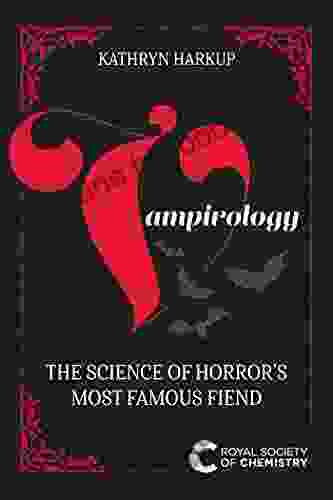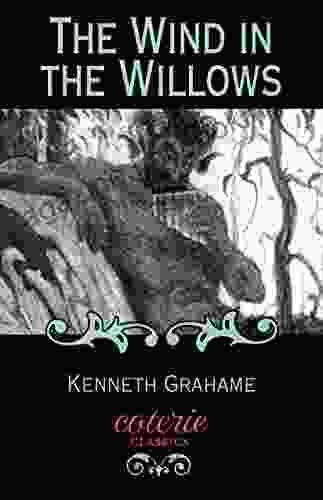Horror has always been a part of human culture. From the earliest cave paintings depicting terrifying beasts to modern-day horror films and novels, we have been fascinated by the macabre and the terrifying. But what is it about horror that makes it so captivating? Why do we seek out experiences that make us scared, anxious, and even disgusted?
5 out of 5
| Language | : | English |
| File size | : | 1355 KB |
| Text-to-Speech | : | Enabled |
| Screen Reader | : | Supported |
| Enhanced typesetting | : | Enabled |
| Word Wise | : | Enabled |
| Print length | : | 218 pages |
The answer lies in the science of horror. Over the years, researchers have begun to unravel the psychological mechanisms that underlie our fear of the unknown. In this article, we will explore some of the key findings from this research and take a closer look at the science behind our most famous fiends.
The Psychology of Fear
Fear is a natural human emotion that serves to protect us from danger. When we encounter a threat, our brains trigger a series of physiological and psychological responses that prepare us to fight or flee.
These responses include:
- Increased heart rate and breathing
- Dilated pupils
- Tense muscles
- Heightened senses
- Release of stress hormones
In the context of horror, these responses are triggered by the perceived threat of the monster or villain. The more realistic and believable the threat, the more intense our fear response will be.
The Power of Suggestion
In addition to the physiological responses to fear, our brains are also highly susceptible to suggestion. This means that we are more likely to believe and experience something if it is suggested to us by a trusted source.
Horror authors and filmmakers use this principle to great effect. By creating a sense of atmosphere and suspense, they can make us more likely to believe in the possibility of the supernatural or the unknown.
For example, the classic horror film The Exorcist was so effective because it used suggestion to create a sense of realism. The film's director, William Friedkin, went to great lengths to make the film look and feel as authentic as possible, even using real animal carcasses in some scenes.
The result was a film that was so believable that it caused many viewers to experience real fear and anxiety.
The Neurological Responses to Horror
In recent years, researchers have also begun to use brain scans to study the neurological responses to horror. These studies have shown that horror films and stories activate a number of different brain regions, including:
- The amygdala, which is responsible for processing emotions
- The insula, which is involved in disgust and other negative emotions
- The hippocampus, which is involved in memory and learning
- The prefrontal cortex, which is responsible for higher-Free Download cognitive functions
These studies suggest that horror films and stories have a powerful effect on our brains. They can trigger a cascade of emotional and physiological responses that can leave us feeling scared, anxious, and even disgusted.
Our Most Famous Fiends
Over the centuries, horror has spawned a number of iconic monsters and villains. These fiends have haunted our nightmares and fascinated us with their evil deeds.
Here are some of the most famous fiends and the science behind their appeal:
Dracula
Dracula is one of the most enduring characters in horror fiction. He is a vampire, a creature of the night who feeds on the blood of the living. Dracula is a powerful and seductive figure, and his story has been told and retold in countless books, films, and television shows.
The science behind Dracula's appeal lies in his combination of power and vulnerability. He is a creature of darkness, but he is also a victim of his own curse. This duality makes him a compelling and tragic figure.
Frankenstein's Monster
Frankenstein's Monster is another iconic horror figure. He is a creature created from the body parts of corpses. Frankenstein's Monster is a grotesque and terrifying figure, but he is also a victim of his own creator's hubris.
The science behind Frankenstein's Monster's appeal lies in his status as an outsider. He is a creature that is neither human nor animal, and he is rejected by both worlds. This sense of alienation makes him a sympathetic and tragic figure.
Freddy Krueger
Freddy Krueger is a slasher villain who first appeared in the 1984 film A Nightmare on Elm Street. Freddy is a child killer who was burned alive by his victims' parents. He now haunts the dreams of teenagers, killing them in their sleep.
The science behind Freddy Krueger's appeal lies in his ability to tap into our fears of the unknown. He is a predator who exists in the world of dreams, where anything is possible. This makes him a truly terrifying figure.
Horror is a complex and fascinating genre that has the power to both scare and entertain us. The science behind horror can help us to understand why we find these stories so captivating. By knowing the psychological mechanisms that underlie our fear, we can better appreciate the art of horror and the power of storytelling.
So next time you find yourself watching a horror film or reading a horror novel, take a moment to think about the science behind it. It might just make the experience even more enjoyable.


























































































